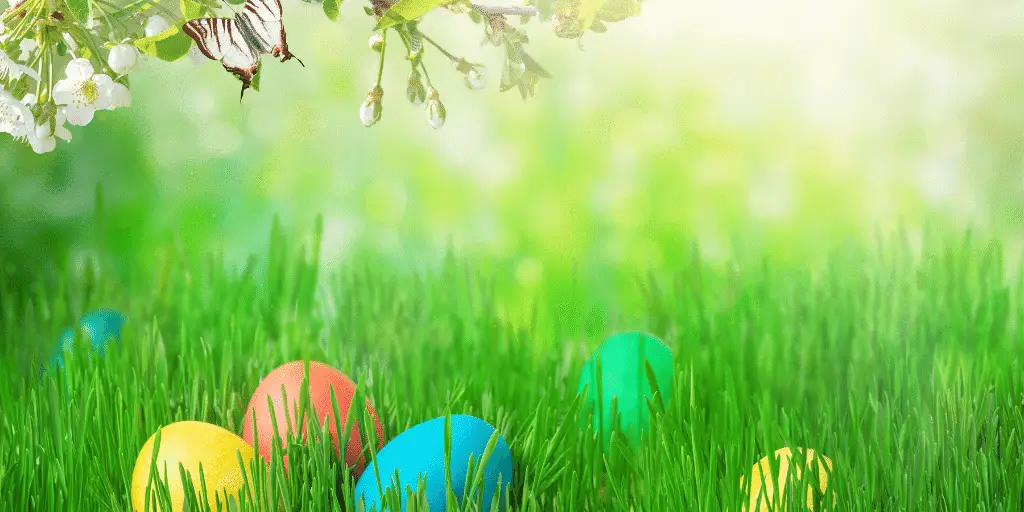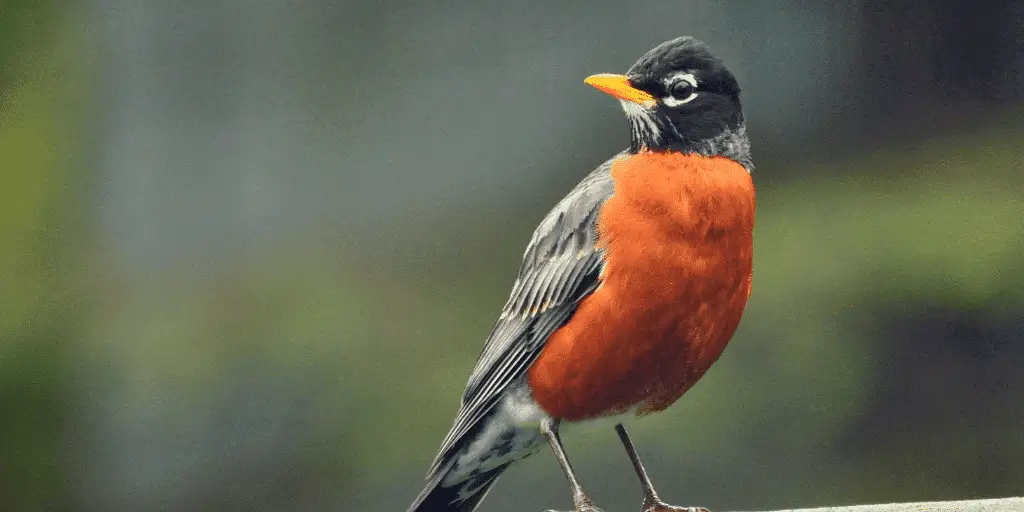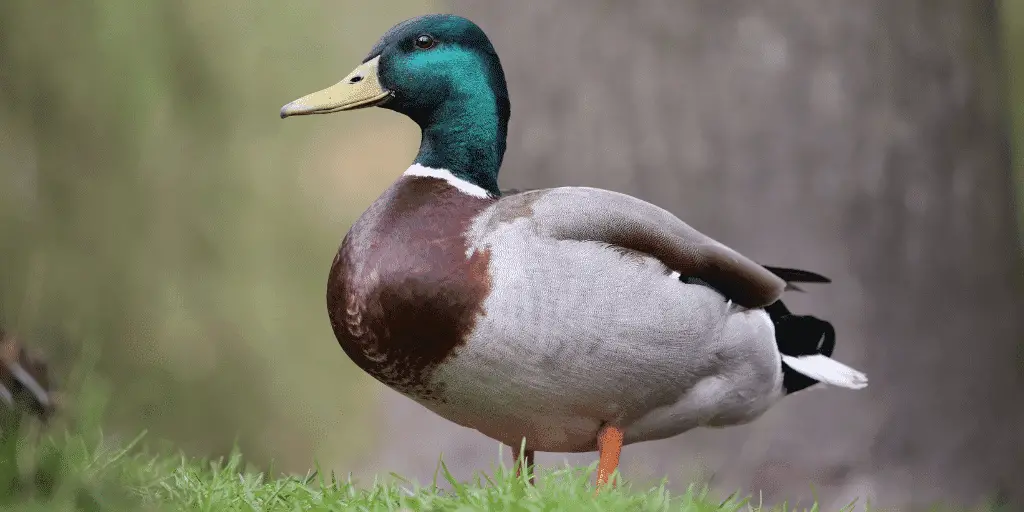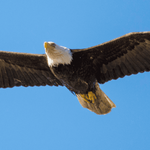Discover the secret lives of birds and their vibrant green eggs, a natural marvel with a purpose beyond beauty. Uncover the science that explains this phenomenon and how it aids in survival, from camouflage to temperature regulation.
Key Takeaways:
- Birds produce green eggs through the biochemical process of depositing the pigment biliverdin onto the eggshell, which is similar to how leaves get their green color from chlorophyll. This pigment also plays a role in camouflage, protecting the eggs from predators.
- The color of bird eggs, including green hues, can be influenced by the birds’ diets, as certain foods provide the pigments needed for eggshell coloration. This direct link from diet to egg color can also reflect the health and vitality of the bird.
- Green egg coloration serves an adaptive purpose beyond aesthetics, aiding in camouflage within the birds’ natural habitat and potentially affecting egg temperature regulation, which is crucial for the development of the chick inside.
- The green eggs of various bird species, such as the American Robin, European Starling, and Mallard Duck, are not only a means of survival through camouflage but also a testament to each species’ ability to adapt and thrive in diverse environments.
- The Southern Cassowary, Emu, Green Heron, Whimbrel, Wood Sandpiper, and Hudsonian Godwit all lay green eggs, which are a marvel of nature’s design, providing camouflage and contributing to the birds’ reproductive success in their respective habitats.
The Fascinating World of Birds with Green Eggs
The American Robin, European Starling, Mallard Duck, Southern Cassowary, Emu, Green Heron, Whimbrel, Wood Sandpiper, and Hudsonian Godwit all lay green eggs.
| Bird Species | Egg Coloration & Camouflage | Adaptive Purpose | Habitat & Conservation Concerns |
| American Robin | Pale green, speckled with brown for camouflage in foliage | Protects from predators, regulates temperature for chick development | Thrives in varied environments; habitat preservation important |
| European Starling | Distinctive greenish hue | Camouflage among nest sites; reflects health and vitality of bird | Adaptable to urban and rural areas; influenced by environmental factors |
| Mallard Duck | Unique green coloration | Camouflage in wetland vegetation; survival strategy | Wetland habitat crucial; threatened by habitat encroachment |
| Southern Cassowary | Pea-green eggs | Provides camouflage in dense forest floors | Threatened by deforestation and urban expansion |
| Emu | Large, emerald green eggs | Camouflage against vegetation; may help regulate temperature | Faces challenges from modern farming practices and habitat loss |
| Green Heron | Pale green, providing natural camouflage | Blends with surrounding vegetation near water bodies | Relies on dense vegetation near water; threatened by habitat loss |
| Whimbrel | Pale green, speckled for camouflage | Blends with open areas like tundras or marshes | Migratory patterns influenced by habitat selection; conservation of wetlands crucial |
| Wood Sandpiper | Pale green, speckled, for camouflage | Natural camouflage in wetland habitats | Wetland degradation poses significant threat to survival |
| Hudsonian Godwit | Green, speckled with dark spots | Camouflage in open tundra and marshlands | Threatened by habitat loss and climate change; need for international conservation |
The Science Behind Egg Colors

Birds’ eggs are like little masterpieces, each with its own pattern and palette. But have you ever wondered why they come in so many colors, especially those intriguing green hues? It’s not just for show; there’s a whole science to it that’s as fascinating as the colors themselves.
The Biochemical Process of Eggshell Pigmentation
When it comes to painting eggs, birds don’t have a palette to choose from. Instead, their bodies create pigments that give the eggshells their colors. For green eggs, the star pigment is biliverdin.
This pigment is made in the bird’s body and then deposited onto the eggshell. It’s a bit like how leaves get their green color from chlorophyll. Biliverdin is also responsible for the blue-green shades in bruises, but in eggshells, it’s all about creating the perfect color to keep the eggs safe and sound.
Adaptive Significance of Egg Color Variations
Now, why would a bird go through all the trouble to make green eggs? It’s not just to make them pretty. Green eggs often blend in with their surroundings, which is great for hiding them from predators. It’s like nature’s own version of camouflage. But that’s not all.
The color of an egg can also affect how warm it gets in the sun, which is super important for keeping the little chick inside cozy until it’s ready to hatch. Some birds even use the color of their eggs to send signals to other birds. It’s like saying, “Hey, I’m healthy and I make great eggs!”
Diet and Eggshell Color
What a bird eats can also play a big role in the color of its eggs. Just like flamingos get their pink color from eating shrimp, birds can get the building blocks for biliverdin from their diet. So, if a bird munches on lots of food rich in certain pigments, those pigments can end up in the eggshell. It’s a direct link from the dinner table to the egg.
Understanding the science behind egg colors is like unlocking a secret code in nature. It shows us how birds use colors for survival and gives us a glimpse into the incredible ways that nature works.
2. American Robin

Nesting Habits and Egg Characteristics
Imagine a quiet morning, the sun peeking through the leaves, and there, amidst the gentle rustle of foliage, you spot an American Robin diligently constructing its home.
These birds are master architects of the avian world, often choosing sites that range from the crook of a tree branch to the eaves of a bustling city building. The American Robin’s adaptability to various environments is a testament to its survival, thriving in both wooded areas and urban settings.
The materials for the nest are gathered with care—twigs, grass, and even paper—woven together to create a sturdy cradle. The female Robin lines the inner cup with mud, which, upon drying, forms a solid foundation for the eggs. This meticulous process ensures the safety and comfort of the next generation.
The eggs themselves are a marvel of nature. Typically, a clutch consists of three to five eggs, each a delicate pale green, speckled with brown.
These colors serve a purpose beyond mere beauty; they provide camouflage among the leaves and branches, protecting the eggs from potential predators. Additionally, the hue aids in regulating temperature, ensuring the developing chicks are kept at just the right warmth.
During the incubation period, which lasts about two weeks, the female Robin rarely leaves her precious charges, her dedication unwavering. The male may take brief turns, but it is primarily the female who feels the weight of responsibility.
Once the eggs hatch, both parents are fully engaged in the feeding and protection of their offspring.
The green eggs of the American Robin are not just a symbol of new life; they are a testament to the bird’s incredible ability to adapt and thrive in a changing world. Their presence in our backyards is a daily reminder of nature’s resilience and beauty.
3. European Starling
Characteristics and Green Egg Production
Imagine a bird with feathers that shimmer like a soap bubble under the sunlight. That’s the European Starling for you, a bird that’s as common in city parks as it is in rural barnyards. But it’s not just their glossy, iridescent plumage that catches the eye; it’s also their unique green eggs that spark curiosity.
When springtime rolls around, starlings get busy with their breeding rituals. They aren’t picky about where they nest, but they do have a penchant for holes and cavities, whether in trees or buildings.
The female starling lays a clutch of about four to six eggs, and these aren’t just any eggs; they have a distinctive greenish hue. This color may play a role in camouflage, hiding them from predators that might be lurking around the nest site.
The starling’s adaptability is nothing short of remarkable. These birds have made themselves at home on multiple continents, and this widespread presence has a say in their nesting and egg-laying behaviors. Whether it’s the bustling cityscape of New York or the rolling countryside of Europe, starlings adjust their habits to suit their environment.
Their social dynamics are a sight to behold, with flocks that can number in the thousands during winter. But when it comes to breeding, they prefer a more solitary approach.
Their diet is as varied as their habitats, feasting on insects, fruits, and seeds, which ensures they have the energy needed for the demanding breeding season.
Environmental factors also play a pivotal role in the starling’s reproductive cycle. Changes in temperature and food availability can shift their breeding season, influencing when and where these green eggs will make their annual debut.
By understanding the European Starling’s life cycle, we get a glimpse into how a species’ behavior, habitat, and even egg coloration are all pieces of a complex ecological puzzle.
4. Mallard Duck

Nesting and Green Egg Facts
Imagine strolling through a park and spotting a mother duck with her ducklings in tow, waddling towards a pond. That’s a scene often graced by the presence of the Mallard Duck, a species renowned not just for its ubiquity in both urban and wild landscapes, but also for its distinctive green eggs.
Mallards are a common sight in wetlands, lakes, and rivers across North America and beyond. When it comes to nesting, these ducks are not overly picky, but they do have preferences. They often choose locations that are well-concealed by vegetation, providing a shield against predators.
The nests themselves are marvels of avian architecture, crafted from grasses and lined with down plucked from the mother’s own breast, creating a cozy cradle for her eggs.
The green eggs of the Mallard Duck are a wonder of nature. This unique coloration is not just for show; it serves a critical purpose. The green hue blends seamlessly with the surrounding foliage, making the eggs less conspicuous to predators like raccoons, foxes, and birds of prey.
This camouflage is a survival strategy that has evolved over time, allowing the eggs to remain hidden in plain sight within the verdant wetland ecosystems.
Mother Mallards are the epitome of dedication. Once the eggs are laid, the female will incubate them for about 28 days, rarely leaving the nest for more than a few minutes to feed. This steadfast maternal care ensures that the majority of her brood will hatch successfully.
After the ducklings emerge, they are not left to fend for themselves; they remain under their mother’s watchful eye, learning to forage and swim, until they are ready to spread their wings and explore the world on their own.
The green eggs of the Mallard Duck are not just a curiosity; they are a testament to the intricate balance of nature, where every hue and habit has its place in the grand tapestry of life.
5. Southern Cassowary
Unique Egg Coloration
Imagine wandering through the dense, humid rainforests of Australia and New Guinea, where the foliage forms a lush canopy overhead. In this verdant world, a creature that looks as though it stepped out of prehistory roams with a quiet, commanding presence.
This is the realm of the Southern Cassowary, a bird that’s as enigmatic as it is striking. With its vivid blue neck and imposing casque, the cassowary is a sight to behold, but it’s the bird’s eggs that harbor a truly captivating secret—they are a shade of pea-green.
The Southern Cassowary’s solitary nature means it’s a rare sight, even in its native habitat. These birds are fiercely territorial, and they prefer the solitude of the forest to the company of others. When it comes to reproduction, the cassowary’s strategies are as unique as its appearance.
After the female lays her eggs, it’s the male who takes on the role of incubator, dedicating himself to the task with a surprising tenderness that belies his formidable size.
But why green eggs? In the dappled light of the forest floor, these eggs blend seamlessly with the environment. This camouflage is vital for protection from predators during the lengthy incubation period.
The coloration of the eggs is a masterstroke of evolution, allowing them to remain hidden in plain sight among the fallen leaves and underbrush.
As we delve into the life of the Southern Cassowary, we uncover a world where every detail has its purpose, from the bird’s dagger-like claws—essential for defense—to the mysterious allure of its vibrant green eggs. These eggs are not just a marvel of color; they are a testament to the cassowary’s adaptation to its environment, a natural wonder that continues to fascinate and inspire.
6. Emu

Reproductive Behavior and Egg Color
Imagine trekking through the vast Australian outback and stumbling upon a sight of wonder: a nest of large, emerald green eggs, each one a natural gem against the earthy backdrop. These are the eggs of the emu, Australia’s largest native bird and the second-largest living bird by height, after its relative the ostrich.
The emu’s breeding cycle is as unique as the color of its eggs. As the Australian summer fades, emus begin their courtship, which can be quite a display of booming calls and intricate dances.
Breeding pairs are formed, but unlike many bird species, it’s the male emu who takes center stage in the journey of reproduction. After the female lays her striking green eggs, which can number from 5 to 15 in a clutch, she steps away from the nest, leaving the dedicated male to take on the role of incubator.
The male emu’s commitment to his eggs is remarkable. He hardly leaves the nest, surviving on stored body fat and any dew or rainwater within reach. For about eight weeks, he will incubate these precious eggs, turning them regularly to ensure even warmth.
The green pigment of the eggs is thought to provide camouflage, blending in with the surrounding vegetation and protecting them from predators.
Once hatched, the male continues his role, shepherding the striped chicks for up to 18 months, teaching them how to forage for a diet of plants, insects, and small animals. This extended care is crucial for survival in the unpredictable Australian environment.
The emerald hue of the emu’s eggs is not just for show. It’s believed that the coloration may help regulate temperature, absorbing heat while also shielding the developing embryo from the harsh sun. Additionally, the green pigment may deter predators by making the eggs less conspicuous among the foliage.
Through these adaptive behaviors, the emu has thrived in the challenging conditions of the outback, and its green eggs continue to be a source of fascination and a symbol of the resilience and uniqueness of Australia’s wildlife.
7. Green Heron
Nesting Habits and Egg Description
Imagine a quiet, still pond, fringed with the lush greenery of reeds and shrubs. Here, the Green Heron makes its home, a master of stealth and a creature of habit. These birds are known for their preference for dense vegetation near water bodies when it comes to nesting.
They are not the type to make a spectacle of their home; rather, they tuck their nests away, hidden from the prying eyes of predators and humans alike.
The construction of a Green Heron’s nest is a testament to the bird’s resourcefulness. Twigs, sticks, and plant materials are intricately woven together to create a sturdy platform, often in the fork of a tree or shrub.
Both parents are involved in this delicate process, taking turns to fortify their future offspring’s sanctuary.
As for the eggs, they are a marvel in themselves. The Green Heron lays eggs that are pale green in color, a natural camouflage against the leafy backdrop of their nesting environment.
This coloration is not just for beauty; it serves a critical purpose in the wild, helping to shield the eggs from the keen eyes of raccoons, snakes, and other predators that would relish the chance to feast on them.
The Green Heron’s remarkable fishing techniques are also a sight to behold. They can often be seen standing motionless at the water’s edge, waiting patiently before striking with lightning speed to catch their prey.
This skill is essential not just for their survival but also for the nourishment of their young. The abundance of food in their aquatic habitats is a key factor in the timing of their breeding season and the success rate of their offspring.
The life of the Green Heron is one of balance and adaptation. Their nesting habits, the care they provide to their young, and the very color of their eggs are all finely tuned to their environment, showcasing the beauty and complexity of their reproductive behaviors.
It’s a cycle that continues year after year, as these birds quietly go about their business, hidden in plain sight by the water’s edge.
8. Whimbrel

Egg Characteristics and Nesting Locations
Imagine a bird that embarks on an epic journey across continents, only to settle in the most serene of landscapes to lay its precious eggs. The Whimbrel is one such migratory shorebird, known for its pale green eggs that are beautifully speckled with brown spots. These eggs are not just a marvel of nature’s artistry but also a masterclass in survival tactics.
The Whimbrel’s migration is a testament to its resilience, often covering vast distances from southern wintering grounds to northern breeding habitats. Upon arrival, these birds exhibit a remarkable finesse in selecting their nesting sites. They often choose open areas like tundras or marshes, where the ground’s palette complements their egg’s coloration.
This choice is no coincidence; the pale green hue, dappled with brown, blends seamlessly with the surrounding vegetation and soil, creating a natural camouflage. This clever coloration strategy is crucial for the eggs’ survival, as it helps them evade the prying eyes of predators.
Nest site selection is a critical decision for the Whimbrel, as the safety of their future offspring depends on it. The birds look for locations that offer a balance between visibility to spot approaching danger and concealment to keep their eggs hidden.
The nests are not elaborate; a simple depression in the ground suffices, as the eggs’ camouflage does most of the protective work.
By understanding the Whimbrel’s migratory patterns and how they influence breeding behaviors and nest site selection, one gains insight into the intricate ways in which bird species adapt to their environments.
The Whimbrel’s journey and reproductive strategies are a beautiful example of the interconnectedness of life, showcasing how migratory patterns, habitat selection, and even the coloration of an egg are all pieces of a larger ecological puzzle.
9. Wood Sandpiper
Breeding Habits and Egg Coloration
Imagine a small, nimble bird, the Wood Sandpiper, tiptoeing through the marshes, its eyes keenly surveying the wetland for the perfect nesting spot. This bird, often overlooked due to its modest size, is a marvel of nature’s design, particularly when it comes to its breeding habits and the unique coloration of its eggs.
The Wood Sandpiper is a traveler, migrating vast distances, but it is in the wetland habitats where it truly comes to life. Here, amidst the reeds and shallow waters, it constructs its nest, a simple depression on the ground, often lined with plant material. The choice of location is no accident; these birds are strategic, selecting sites that offer protection and seclusion.
When the eggs are laid, their pale green hue, speckled with darker spots, becomes their first line of defense. This coloration is a masterstroke of camouflage, blending seamlessly with the surrounding vegetation and deterring predators.
The incubation process is a testament to the dedication of the Wood Sandpiper parents, who take turns warming the eggs, ensuring their precious cargo is given the best chance at life.
Yet, the story of the Wood Sandpiper is not just one of individual survival but also a narrative that underscores the interconnectedness of species and habitat. The decline of wetland ecosystems around the globe poses a significant threat to these birds.
The loss of breeding grounds due to drainage, pollution, and land conversion is a stark reminder of the challenges faced by the Wood Sandpiper and countless other species that rely on these habitats.
The conservation of wetlands is not just about preserving a landscape; it’s about safeguarding the intricate dance of life that occurs within them. For the Wood Sandpiper, the protection of these areas is crucial, ensuring that future generations can continue to lay their pale green eggs in the safety of the marshes, a testament to the resilience of nature and the importance of human stewardship.
10. Hudsonian Godwit

Nesting Strategy and Egg Appearance
Imagine a bird that travels thousands of miles across continents, from the southern tip of South America to the northernmost parts of Canada, just to nest. That’s the life of the Hudsonian Godwit, a species that has mastered the art of long-distance migration.
When it comes to breeding, these birds are quite selective, often settling in the open tundra and marshlands, where the vastness of the landscape is as impressive as it is crucial for their survival.
The Hudsonian Godwit’s eggs are a marvel in themselves, with a beautiful base color of green, speckled with dark spots. This isn’t just a matter of avian aesthetics; the coloration serves a vital purpose.
In the godwit’s chosen nesting grounds, the green hue blends seamlessly with the surrounding vegetation, providing a natural camouflage that shields the eggs from the prying eyes of predators. This clever coloration is a testament to the bird’s evolutionary adaptations, ensuring that its offspring have a better chance of survival in the wild.
However, the godwit’s journey and its future generations are under threat. Habitat loss, due to human encroachment, and the looming specter of climate change are disrupting their traditional nesting sites.
These changes not only affect the availability of suitable nesting areas but also the intricate balance of the ecosystem that the godwits rely on. It’s a stark reminder of the interconnectedness of nature and the impact of human activity on migratory bird species.
The plight of the Hudsonian Godwit underscores the need for international conservation efforts. Protecting these birds isn’t just about preserving a single species; it’s about maintaining the integrity of migratory patterns that have existed for millennia.
By understanding the godwit’s nesting strategy and the significance of its egg appearance, we can begin to appreciate the delicate dance between survival and adaptation, and the role we play in safeguarding the future of these remarkable travelers.
Conclusion
In conclusion, the diverse array of bird species that lay green eggs, from the American Robin to the Hudsonian Godwit, demonstrates the intricate relationship between egg coloration and survival strategies. The pigment biliverdin gives these eggs their green hue, serving as camouflage to protect against predators and, in some cases, to regulate temperature for the developing chicks.
The article explored the adaptive significance of egg color variations, the impact of diet on eggshell color, and the nesting habits of various birds, highlighting the importance of habitat conservation for these species.
Each bird’s unique approach to reproduction, including nest construction and parental care, reflects the evolutionary adaptations that have allowed them to thrive in their respective environments.
The green eggs of these birds are not just a natural curiosity; they symbolize the complex ecological balance and the resilience of wildlife, reminding us of the need for environmental stewardship to preserve these natural wonders for future generations.
- What Should I Do If A Koala Bites Me? Safety Guide - 2024-05-30
- Are Kangaroos Born Without Hind Legs? A Fascinating Journey - 2024-05-30
- Animals That Look Like Squirrels - 2024-05-30









